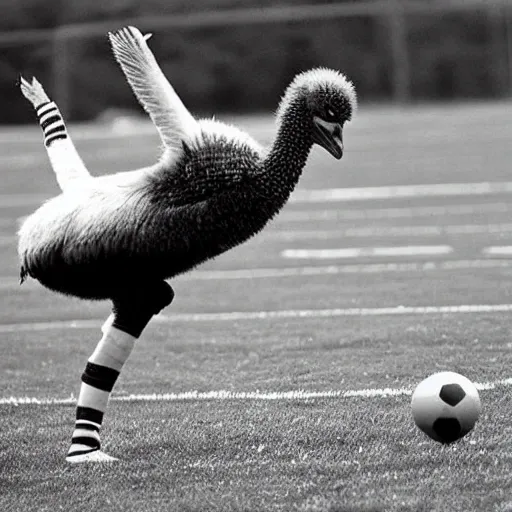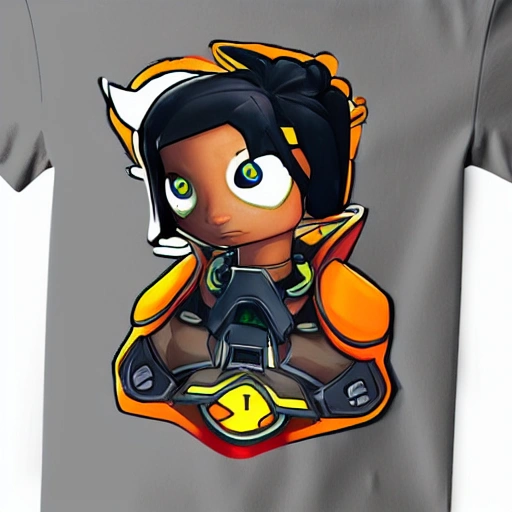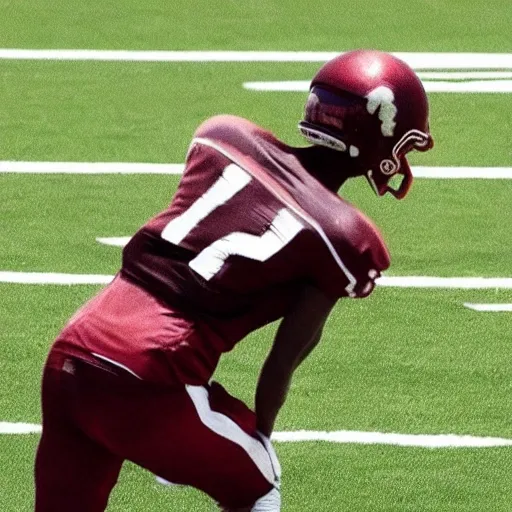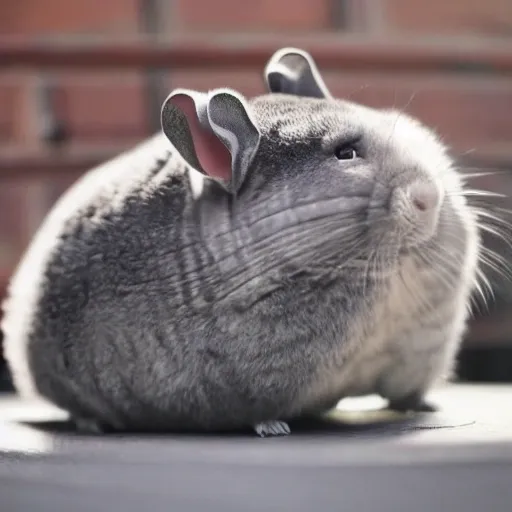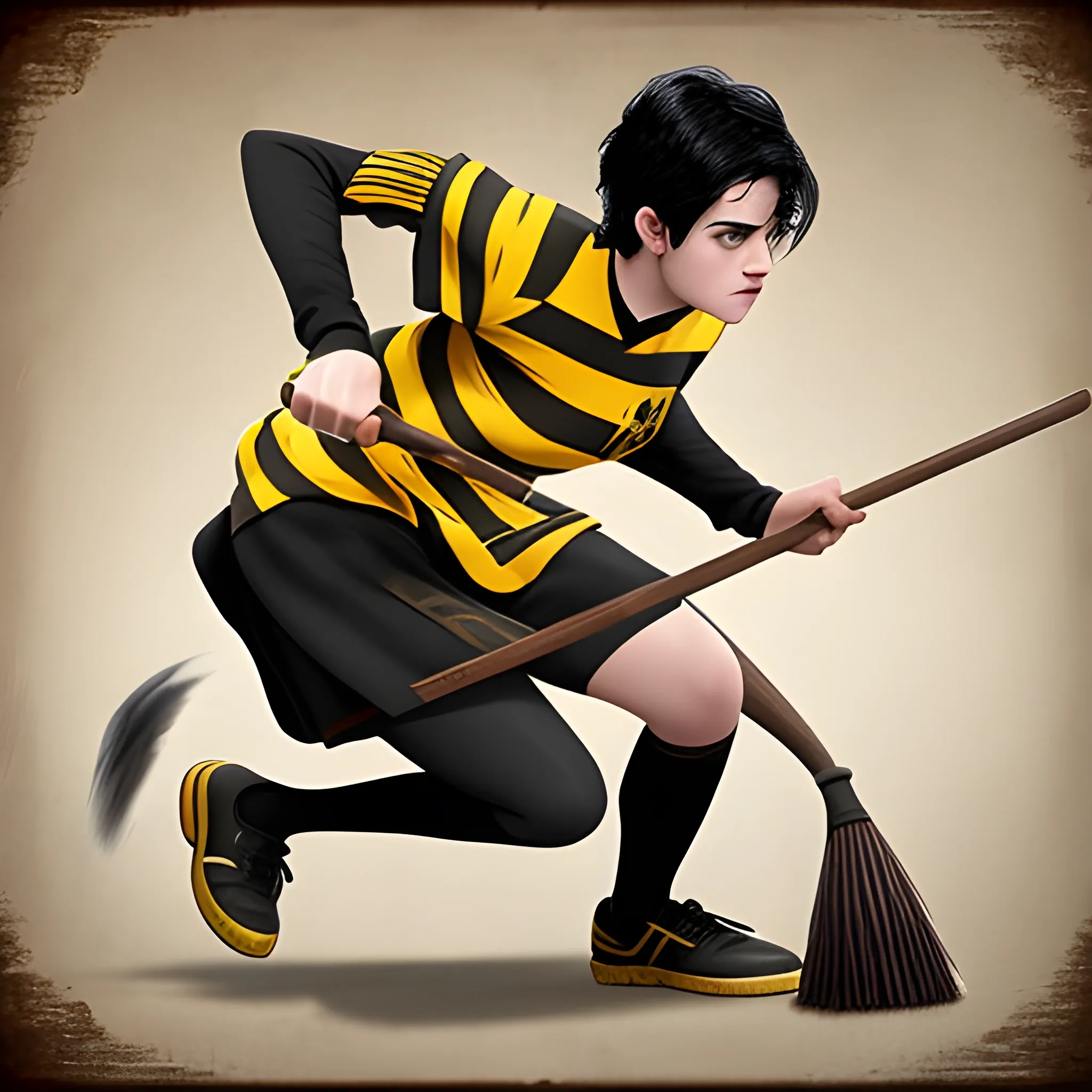Search Results for player
Explore AI generated designs, images, art and prompts by top community artists and designers.
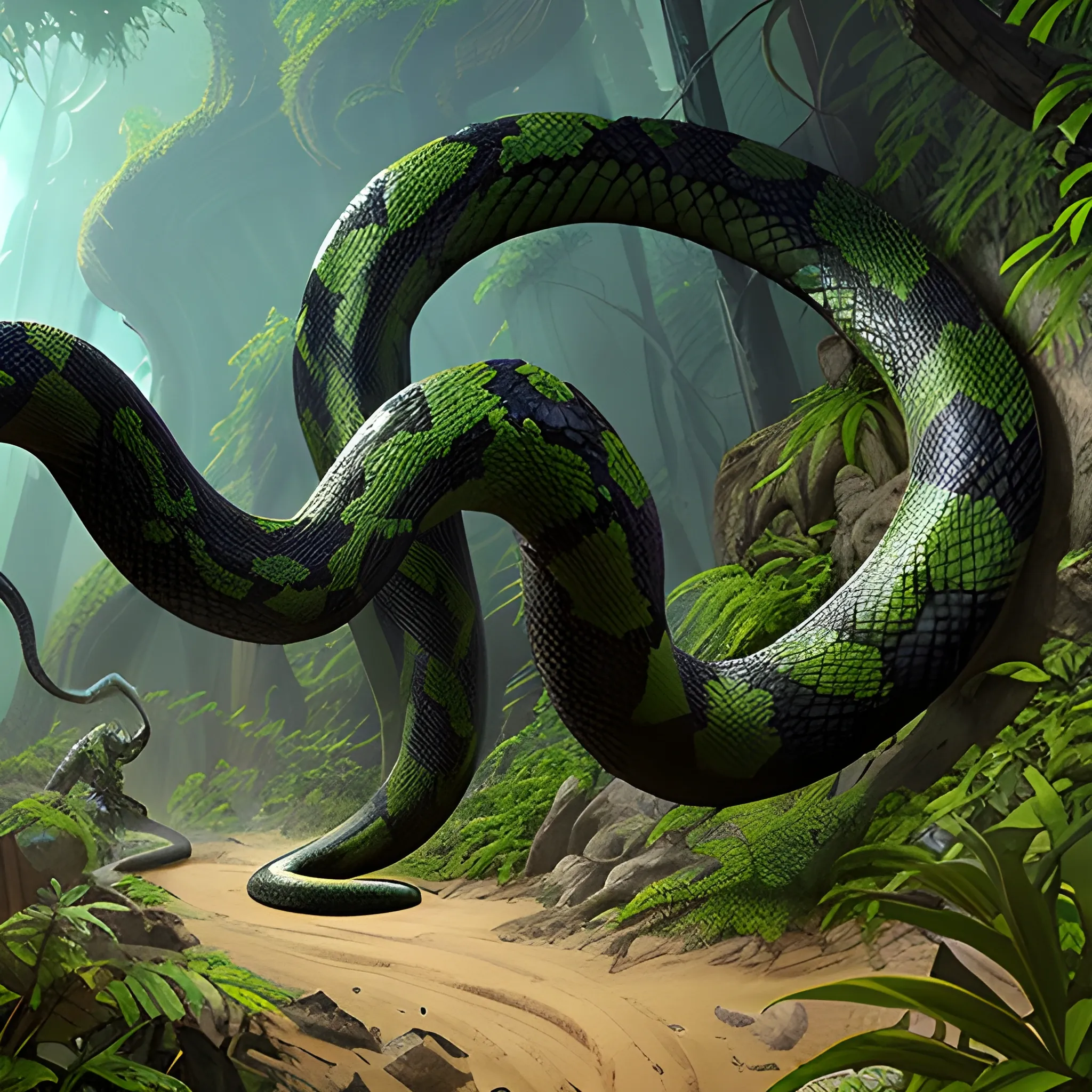
Appearance: The Giant Poisonous Snake is a massive and fearsome reptile , much larger than its smaller counterpart. It has a thick and muscular body , and its scales can have a range of colors , from mottled greens and browns to striking patterns that allow it to blend in with its surroundings. The snake's head is large and triangular , with a pair of long , hollow fangs through which it delivers its potent venom. Features: The Giant Poisonous Snake is known for its deadly venomous bite , which it uses to incapacitate and devour prey. Its venom is significantly more potent than that of its smaller cousin , making it a formidable threat to adventurers. A bite from a Giant Poisonous Snake can cause severe pain , paralysis , or even death , depending on the creature's size and resilience. Habitat: Giant Poisonous Snakes typically inhabit dense jungles , dark swamps , and other untamed wilderness areas. They prefer warm and humid environments and may be found in hidden lairs or lurking near water sources. In your DND world , they could guard sacred sites or serve as minions of malevolent beings. Behavior: Like their smaller counterparts , Giant Poisonous Snakes are stealthy predators , using their large size and camouflage to ambush prey. They strike swiftly and accurately , delivering their venom to immobilize their victims before consuming them. While generally non-aggressive , they may attack if they feel threatened or if potential prey ventures too close. Role in the World: In your DND world , Giant Poisonous Snakes could be apex predators in their habitat , feared and respected by other creatures. They might be associated with ancient legends or guarded by nature spirits. Druids and rangers might view them as symbols of balance and the wild's dangers. Encountering a Giant Poisonous Snake in the wild is a perilous and potentially deadly event for adventurers. The snake's venomous bite can have severe consequences , making quick thinking and decisive action essential to survive an encounter. Players must be well-prepared with protective spells , antidotes , or other means to counteract the venom's effects. The presence of Giant Poisonous Snakes in your campaign can create an atmosphere of danger and suspense , particularly in jungles or other untamed regions. Players will need to be vigilant and cautious during their explorations , as the looming threat of these massive venomous serpents adds an element of peril to their adventures. Giant Poisonous Snakes can serve as significant challenges for higher-level adventurers , reminding them of the dangers that still lurk even in seemingly familiar environments. ,

full frame masculine beefy , super hairy bodybuilder man , in lace and pearls bodysuit , with large bulging crotch and a white stocking suspender belt around the waist long sexy stockings , high heels , huge back round muscle ass , huge round back. huge breast. sweating in a crowded locker room rugby players. Super detailed atmosphere , 8k Ultra HD , unreal engine 5 render photoshoot , perfect lighting. detailed face. octane render. realistic poses , realistic characters , proportions ,
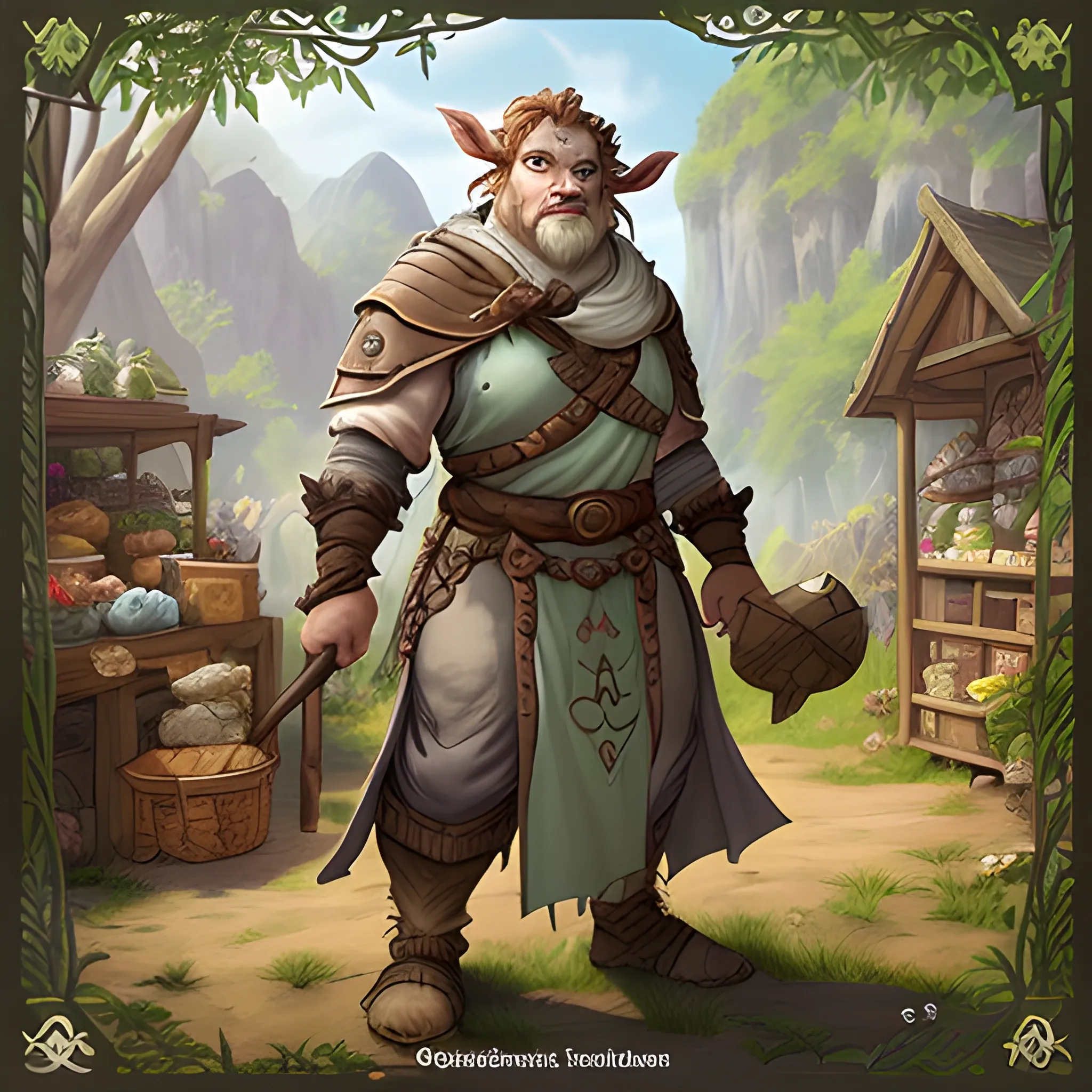
Appearance: The Firbolg paladin merchant is an imposing yet gentle figure , embodying the harmonious blend of strength and compassion. Standing tall , their towering frame is covered in earth-toned fur , seamlessly blending with the natural surroundings. Their eyes radiate a sense of wisdom and kindness , and their warm smile puts even the weariest travelers at ease. They wear simple and practical attire , adorned with handcrafted symbols of their devotion to their chosen path as a paladin. Features: The Firbolg paladin merchant is not just a purveyor of goods but also a protector of the weak and defender of justice. They possess a deep-rooted sense of empathy and strive to bring peace and prosperity to all they encounter. Their connection with nature grants them a unique understanding of the land and its resources , allowing them to offer rare and sustainable goods to their customers. Habitat: The Firbolg paladin merchant can be found traveling far and wide , bringing their wares and ideals to both bustling cities and remote villages. They often set up stalls at the edges of markets or in the midst of nature , attracting customers seeking ethically sourced and ecologically friendly products. In your DND world , this Firbolg might hail from a sacred grove , a guardian of ancient traditions , or a wandering advocate for harmony and balance. Behavior: True to their Firbolg nature , the paladin merchant is a calm and introspective individual , always seeking to understand the needs and desires of others. They are not driven by greed or ambition but by a deep desire to make the world a better place. As a paladin , they uphold a strict code of honor and strive to protect the innocent and bring justice to those who harm others. Role in the World: In your DND world , the Firbolg paladin merchant is a symbol of ethical commerce and responsible entrepreneurship. Their stalls are a haven for those seeking ethically sourced goods and rare items that won't harm the environment. Adventurers may find themselves drawn to the paladin merchant , not just for their unique products , but also for the wisdom and guidance they offer. Encountering a Firbolg paladin merchant in your campaign can be an uplifting and transformative experience for players. It presents an opportunity to explore themes of environmental stewardship , social responsibility , and the impact of commerce on the world. The interactions with this paladin merchant can lead to inspiring role-playing moments , where players might learn about the importance of balance and the interconnectedness of all living things. The presence of a Firbolg paladin merchant in your campaign world adds a touch of nature and spirituality to the commercial landscape. Their presence is a reminder that commerce can be a force for good , and the choices individuals make can have far-reaching consequences for the world. This NPC can become a cherished and respected character in your DND campaign , leaving a lasting impression on players as they navigate the complexities of commerce and ethics in your vibrant and dynamic world. ,
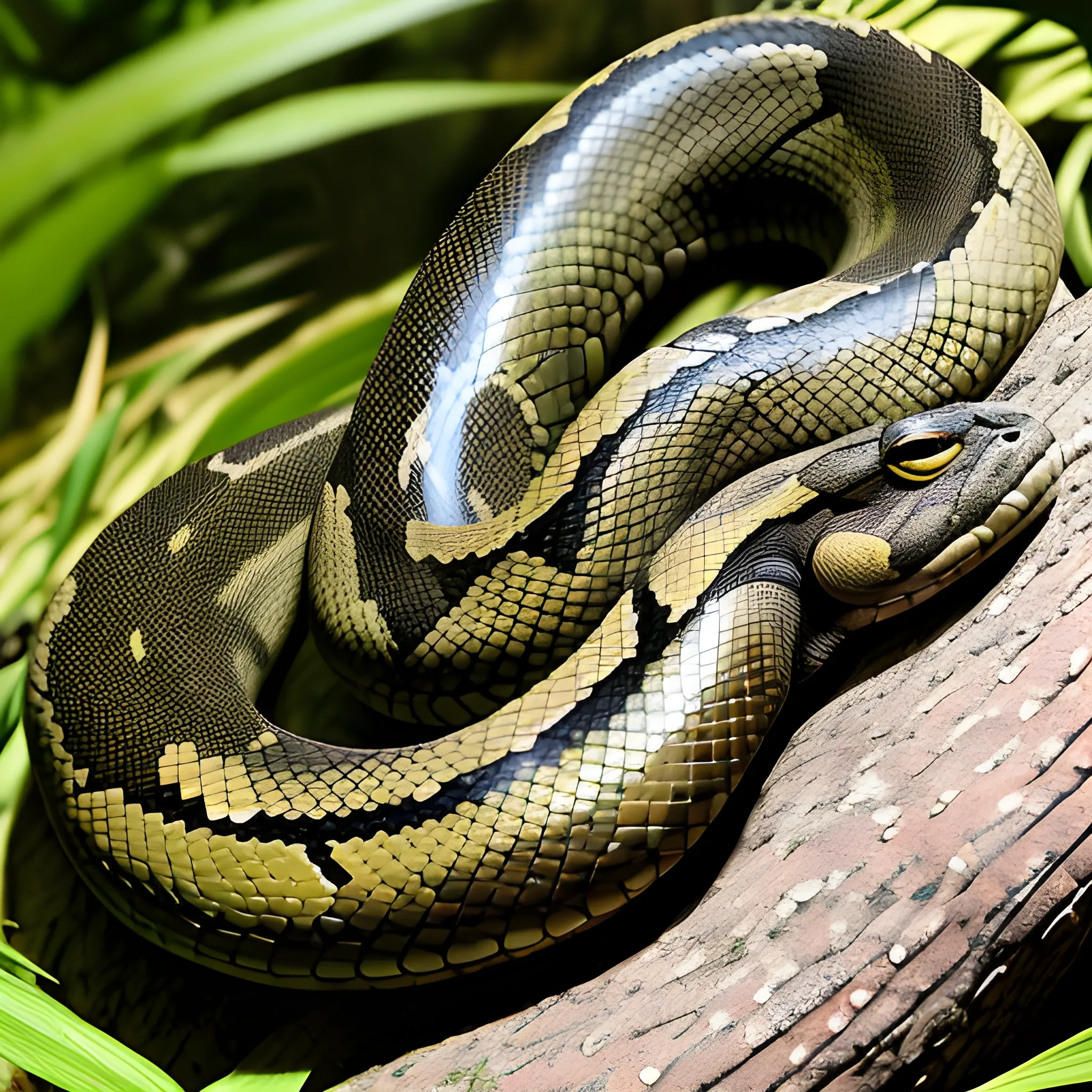
Appearance: The Constrictor Snake is a long and powerful reptile , known for its impressive ability to squeeze and suffocate its prey. It typically has a slender and muscular body , covered in scales that can vary in color from dull brown and green to vibrant patterns. Constrictor snakes have sharp , recurved teeth designed to grip and hold their prey as they constrict it. They are typically non-venomous and rely on their powerful constriction to subdue their victims. Features: The Constrictor Snake is a stealthy predator , relying on its keen senses to locate prey and ambush it. Its long , forked tongue allows it to taste the air and track potential food sources. Once it catches its prey , the snake coils around it , using its powerful muscles to squeeze and immobilize it. This method of hunting allows the snake to subdue prey larger than its mouth , as it doesn't need to swallow the victim whole. Habitat: Constrictor Snakes are found in a wide range of environments , from dense jungles and swamps to arid deserts and grasslands. They prefer warm climates and can be active both during the day and at night. In your DND world , they might inhabit untamed wilderness areas or hidden lairs , waiting for prey to pass by. Behavior: Constrictor snakes are generally solitary creatures , except during mating season. They are non-aggressive toward larger creatures , preferring to avoid confrontation when possible. When hunting , they rely on stealth and patience to surprise their prey. Their constriction technique is highly effective , allowing them to overpower and devour a variety of creatures. Role in the World: In your DND world , Constrictor Snakes could be a common predator in certain regions , often preying on small to medium-sized creatures. Druids and rangers might have a connection with these snakes , viewing them as symbols of balance in the natural world. Encountering a Constrictor Snake in the wild could be a challenging and potentially dangerous situation for adventurers. While they are not typically aggressive toward larger creatures , they may perceive humanoids as potential threats if they feel cornered or provoked. Players might need to exercise caution and use appropriate skills , such as animal handling or survival , to safely navigate through areas where these snakes are known to dwell. If adventurers find themselves facing a Constrictor Snake , they must be prepared for a battle of strength and wits , as the snake's constricting abilities can be deadly if not dealt with carefully. ,
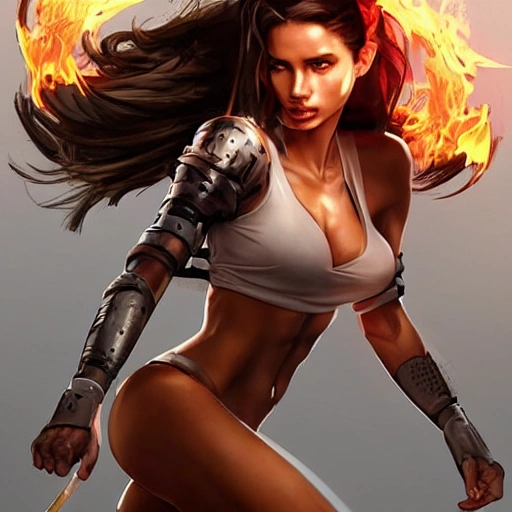
mdjrny-v4 style , soccer player , dynamic pose; Artgerm , Wlop , Greg Rutkowski; the perfect mix of Emily Ratajkowski , Ana de Armas , Angelina Jolie and Adriana Lima as a warrior princess; highly detailed tan skin; beautiful long hair , extremely detailed eyes; low-cut black leather top; wielding a trophy; Flames in the background; Lumen Global Illumination , Lord of the Rings , Game of Thrones , Hyper Realistic , Hyper Detailed , 8k , ,
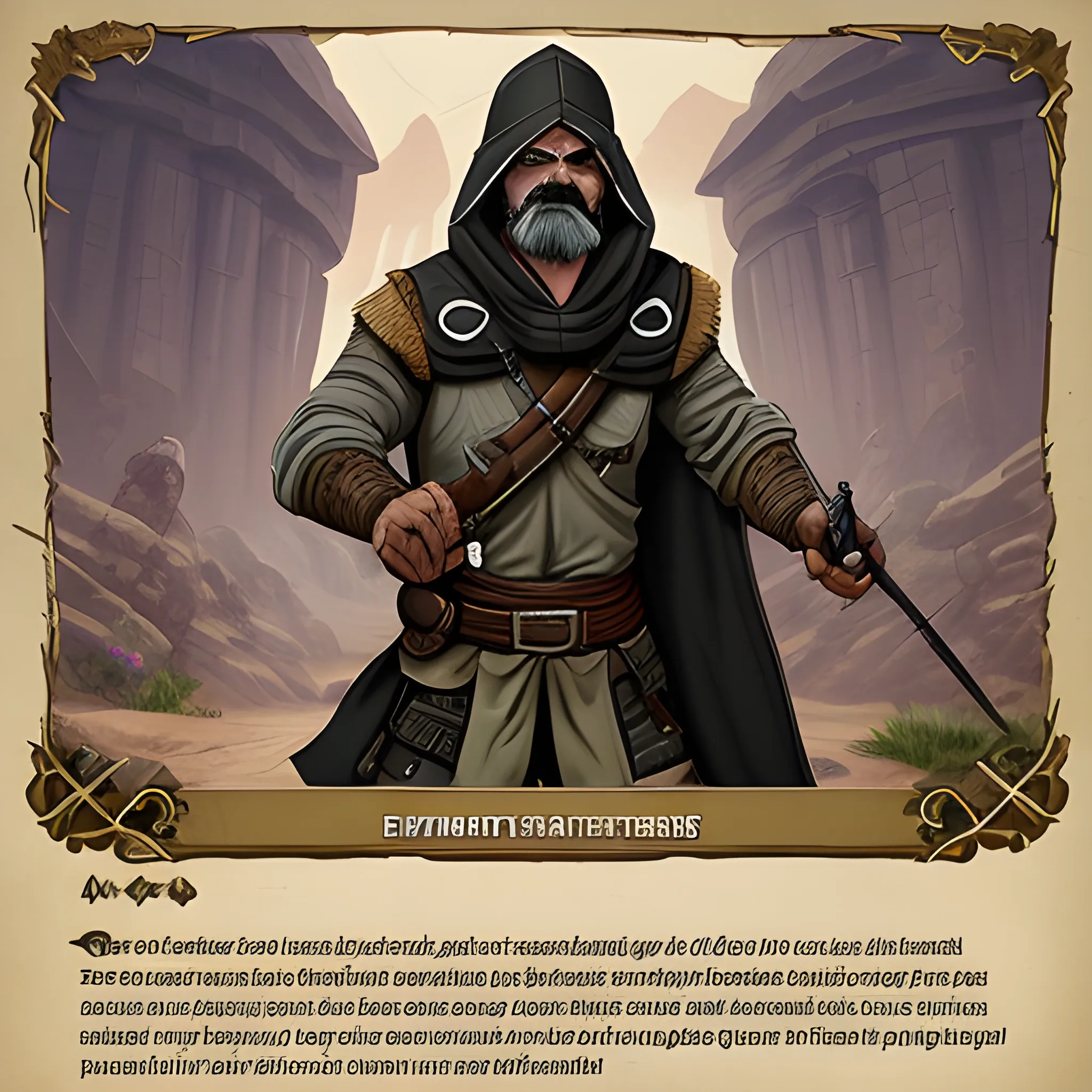
Appearance: The Bandit Leader is a commanding figure , exuding an air of authority and charisma that sets them apart from the ordinary members of their gang. They dress in more elaborate and well-maintained clothing , often adorned with stolen jewelry or symbols of power. Their attire may be a mix of practicality and ostentation , showing off their wealth and status while ensuring they can move freely in combat. The Bandit Leader may have a distinctive and fearsome appearance , with battle scars or an imposing physical presence that demands respect from their followers. Features: The Bandit Leader is not only a skilled fighter but also a cunning strategist. They possess tactical knowledge , able to plan and execute ambushes and raids with precision. The Bandit Leader is usually armed with high-quality weapons , whether a finely crafted sword or a specially customized bow. Their combat skills and combat prowess make them a formidable adversary in one-on-one combat , and they often lead from the front during raids. Habitat: The Bandit Leader's territory is typically a well-hidden and fortified stronghold , strategically chosen to offer both defense and escape routes. These hideouts may be deep in the wilderness , atop rocky cliffs , or concealed in dense forests. In your DND world , the Bandit Leader might operate from a secluded fortress , a smuggler's den , or even from within the heart of a city , using their influence to conceal their true identity. Behavior: The Bandit Leader is a cunning and ambitious individual , driven by a desire for wealth , power , and control. They are ruthless in their pursuit of dominance , often betraying or eliminating rivals to consolidate their position. The Bandit Leader can be charismatic and manipulative , skilled at inspiring loyalty among their followers through promises of riches and protection. However , they are also quick to punish those who fail them or show any signs of disloyalty. Role in the World: In your DND world , the Bandit Leader serves as the central antagonist to adventurers seeking to thwart criminal activity and restore law and order. They may be the head of a notorious bandit gang , a powerful crime lord with influence over multiple territories , or a charismatic rebel leader opposing a tyrannical regime. Encountering the Bandit Leader in your campaign can be a climactic and high-stakes event , representing the culmination of the adventurers' efforts to confront criminal activity and protect innocent lives. The Bandit Leader's defeat might serve as a major turning point in the campaign , leading to the dismantling of the gang or the exposure of a larger conspiracy. The presence of a Bandit Leader in your campaign world adds an element of intrigue and danger to the setting. Players will need to gather information , form alliances , and carefully plan their approach when confronting such a formidable foe. Engaging with the Bandit Leader and their gang can create thrilling and memorable encounters , providing players with opportunities for cunning negotiation , daring heists , and epic battles that will shape the course of your DND world's history ,
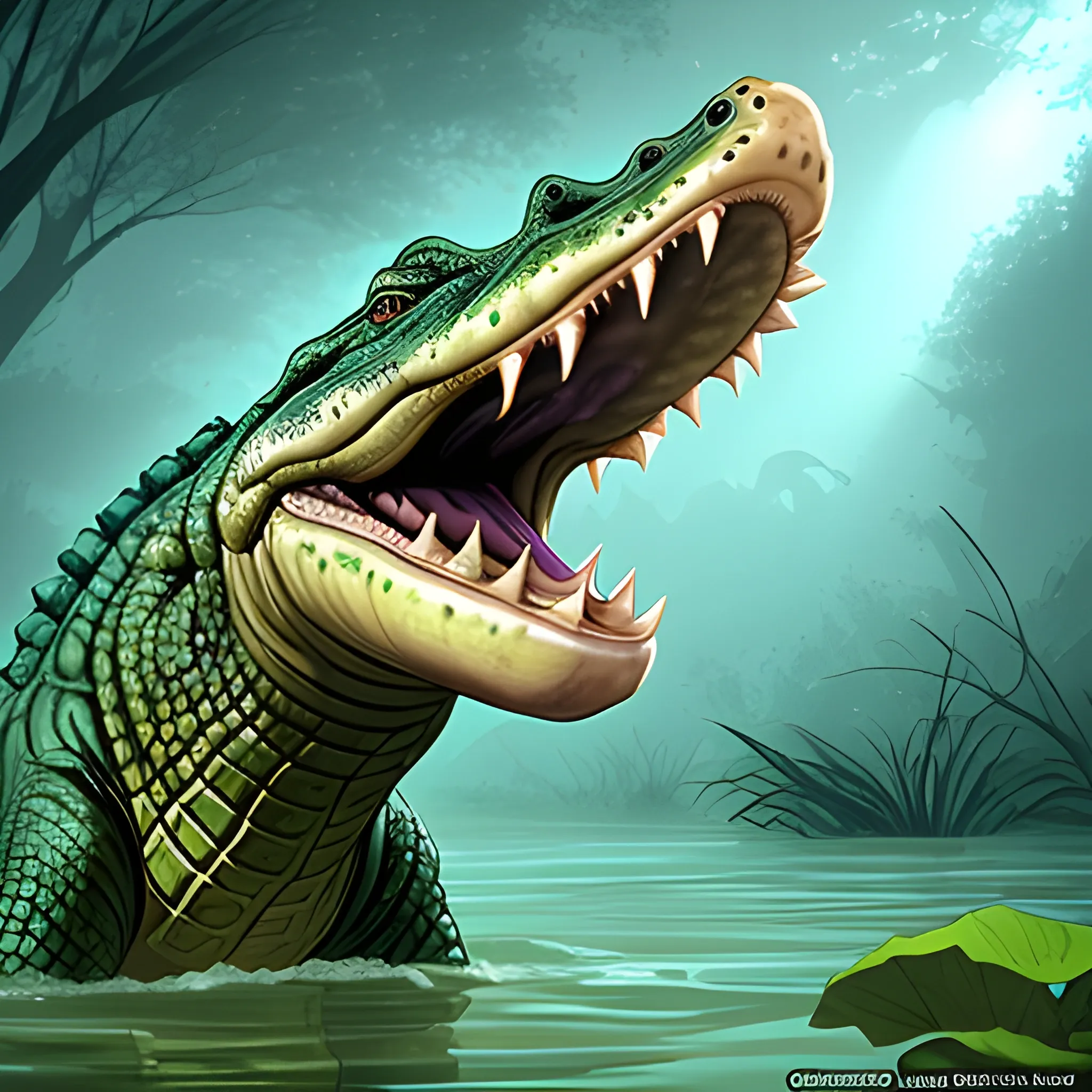
Appearance: The Crocodile is a large and powerful reptile , known for its distinctive long snout , sharp teeth , and armored body. Its scales can have various shades of green , brown , or gray , blending in with the murky waters and marshes it inhabits. The Crocodile's eyes and nostrils are positioned on the top of its head , allowing it to remain mostly submerged while still keeping a watchful eye on potential prey. Features: The Crocodile is an apex predator in aquatic environments , using its powerful jaws to seize and drag its prey underwater. It possesses incredible strength and resilience , making it a fearsome hunter and a challenging opponent for adventurers who venture into its territory. Crocodiles are well-adapted for both land and water , able to move quickly on land and remain submerged for extended periods. Habitat: Crocodiles are typically found in freshwater bodies such as rivers , lakes , and swamps , though they can also inhabit saltwater habitats like estuaries and coastal areas. They are highly territorial creatures , claiming areas of water as their own hunting grounds. In your DND world , they might be guardians of hidden treasures or sacred places. Behavior: Crocodiles are ambush predators , relying on stealth and patience to catch their prey unaware. They lie submerged , often with only their eyes and nostrils visible , and strike with lightning speed when an opportunity presents itself. Crocodiles are more aggressive during their breeding season or if they feel threatened. Role in the World: In your DND world , Crocodiles could be symbols of primal power and ancient guardians. They might be revered or feared by local tribes as creatures of great significance in their myths and beliefs. Druids and rangers might have a connection with Crocodiles , viewing them as an essential part of the natural order. Encountering a Crocodile in the wild can be a dangerous and adrenaline-pumping event for adventurers. Players must be cautious around bodies of water known to be inhabited by Crocodiles , as these creatures can launch surprise attacks. Crossing rivers or exploring swampy terrain could become treacherous , and players will need to be vigilant to spot the telltale signs of lurking predators. The presence of Crocodiles in your campaign adds an element of danger and excitement to aquatic and marshy environments. They can create memorable and intense encounters , challenging players to use their wits and skills to outmaneuver and defeat these fearsome reptilian predators. Additionally , the idea of crossing treacherous waters or exploring hidden marshlands where Crocodiles dwell can evoke a sense of adventure and exploration in your DND world. ,
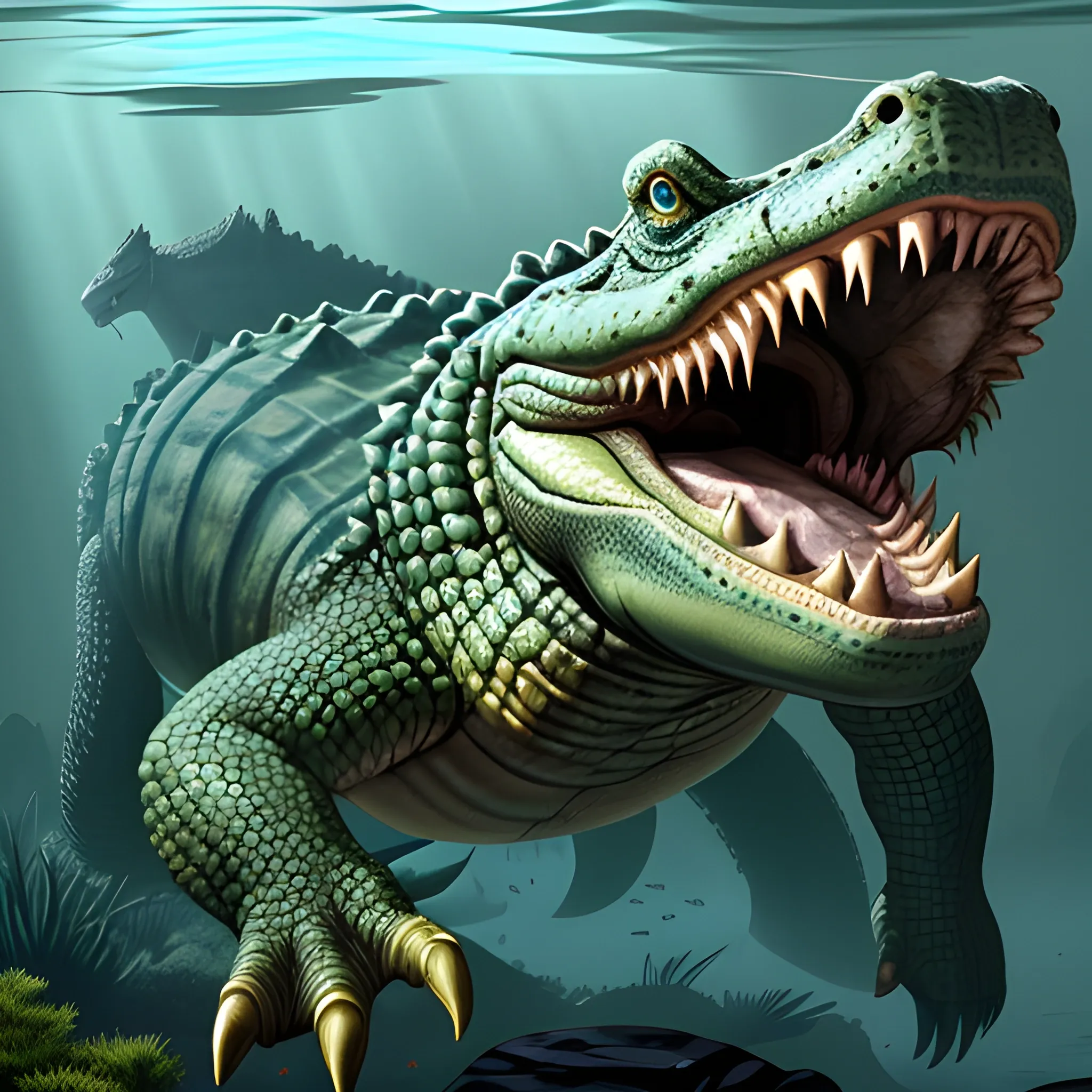
Appearance: The Giant Crocodile is an enormous and monstrous reptile , dwarfing its smaller counterpart in size and power. It has a massive body covered in thick and rugged scales that can range from dark greens to deep browns , perfectly camouflaging it in its aquatic habitat. Its long and powerful tail serves as a formidable weapon , enabling it to swim swiftly and strike with devastating force. The Giant Crocodile's eyes gleam with an intelligence and predatory instinct that sets it apart from ordinary creatures. Features: The Giant Crocodile is a colossal apex predator , boasting immense strength and resilience. Its jaws are filled with rows of sharp teeth , capable of crushing bones and armor with ease. Unlike its smaller kin , the Giant Crocodile is fully adapted for a purely aquatic lifestyle , rarely venturing onto land except to bask in the sun or establish dominance in its territory. Habitat: Giant Crocodiles prefer large bodies of freshwater , such as expansive rivers , deep lakes , and marshlands. They are territorial creatures , claiming vast stretches of water as their hunting grounds. In your DND world , they could inhabit mysterious swamps or hidden lagoons , guarding ancient secrets or treasures. Behavior: As ambush predators , Giant Crocodiles are masters of surprise attacks. They remain mostly submerged , with only their eyes and nostrils visible above the water's surface. When potential prey ventures too close , the Giant Crocodile strikes with astonishing speed and strength , dragging victims underwater to drown or consume. Role in the World: In your DND world , Giant Crocodiles could be legendary creatures , feared and respected by both locals and adventurers alike. They might be considered as guardians of ancient temples or revered as avatars of primordial nature. Druids and rangers might see them as symbols of untamed and primal power. Encountering a Giant Crocodile in the wild is a dangerous and potentially deadly event for adventurers. Its size and power make it an incredibly challenging opponent , even for a well-prepared party. Players must exercise extreme caution when navigating bodies of water known to be inhabited by Giant Crocodiles , as these creatures can deliver swift and lethal attacks. The presence of Giant Crocodiles in your campaign can create an atmosphere of danger and trepidation when exploring swampy and aquatic environments. Players will need to be constantly vigilant and employ strategic thinking to avoid becoming victims of these monstrous reptiles. Crossing waterways or searching for hidden artifacts in areas known to be Giant Crocodile territory can create a sense of high stakes and urgency in your DND world. ,
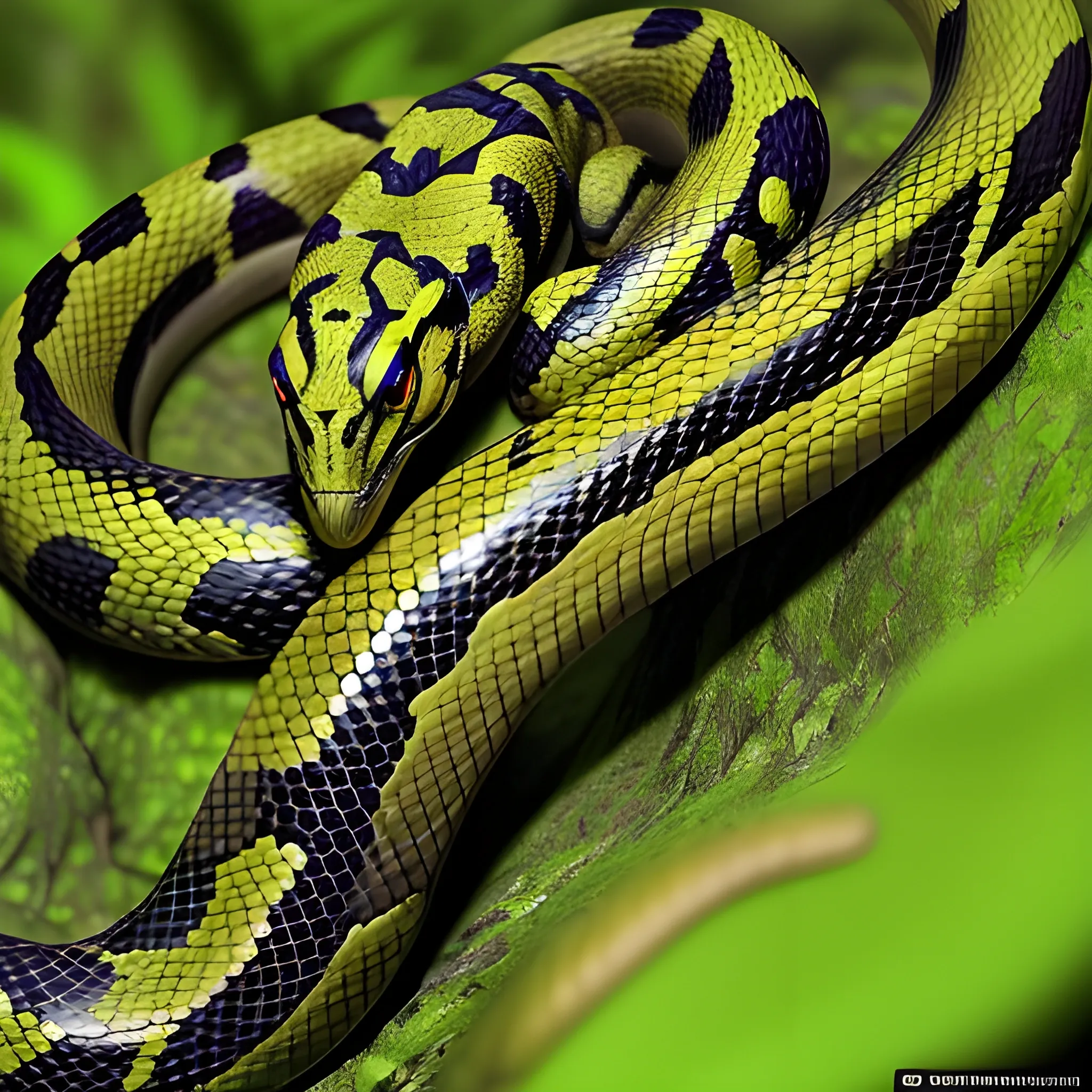
Appearance: The Poisonous Snake is a small to medium-sized reptile with a slender body and a distinctive pattern of scales. Its colors can vary widely , from vibrant and striking patterns to more muted earth tones , helping it blend into its natural surroundings. The snake's head is triangular , and it has a pair of fangs at the front of its mouth , through which it delivers its venom. Features: The Poisonous Snake is known for its venomous bite , which it uses to incapacitate its prey and defend itself from threats. Its venom can vary in potency , from causing mild discomfort to being deadly , depending on the species. While not as powerful as the venom of more dangerous creatures , the Poisonous Snake's bite can still cause considerable harm to unwary adventurers. Habitat: Poisonous Snakes can be found in a wide range of environments , from dense jungles and forests to dry deserts and grasslands. They are highly adaptable creatures and can thrive in various conditions , making them a common sight in untamed wilderness areas. Behavior: The Poisonous Snake is a stealthy predator , relying on its camouflage and patience to ambush its prey. It strikes quickly and accurately , using its venom to immobilize and begin the process of consuming its victim. Poisonous Snakes are generally non-aggressive towards larger creatures , preferring to flee rather than confront a potential threat. Role in the World: In your DND world , Poisonous Snakes could serve as common dangers in the wild , particularly in regions where adventurers explore untamed territories. Druids and rangers might have a connection with these creatures , viewing them as part of the natural balance. Encountering a Poisonous Snake in the wild can be a common and potentially hazardous event for adventurers. While they are generally not aggressive , they may strike if they feel threatened or cornered. Players might need to exercise caution and use skills such as animal handling or survival to avoid confrontations with these venomous reptiles. If adventurers do find themselves bitten , they must act quickly to counteract the effects of the venom and avoid more serious consequences. The presence of Poisonous Snakes in your campaign adds an element of realism and danger to the wilderness. Players will need to be vigilant and watchful during their travels , as the risk of encountering these venomous creatures is ever-present. Poisonous Snakes can also serve as a minor but meaningful challenge , especially for lower-level adventurers , teaching them the importance of preparation and awareness in the untamed wilderness. ,

